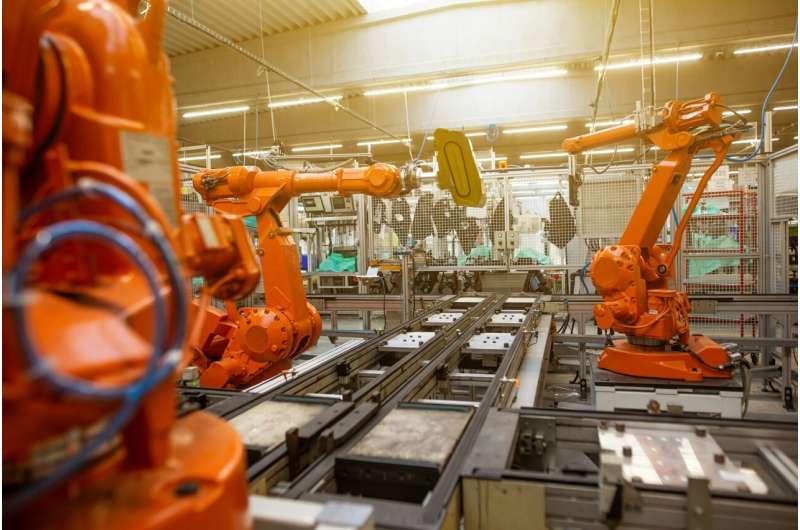This article has been reviewed according to Science X's editorial process and policies. Editors have highlighted the following attributes while ensuring the content's credibility:
fact-checked
trusted source
proofread
Robot planning tool accounts for human carelessness

A new algorithm may make robots safer by making them more aware of human inattentiveness. In computerized simulations of packaging and assembly lines where humans and robots work together, the algorithm developed to account for human carelessness improved safety by about a maximum of 80% and efficiency by about a maximum of 38% compared to existing methods.
The work is reported in IEEE Transactions on Systems, Man, and Cybernetics: Systems.
"There are a large number of accidents that are happening every day due to carelessness—most of them, unfortunately, from human errors," said lead author Mehdi Hosseinzadeh, assistant professor in Washington State University's School of Mechanical and Materials Engineering.
"Robots act as planned and follow the rules, but the humans often don't follow the rules. That's the most difficult and challenging problem."
Robots working with people are increasingly common in many industries, where they often work together. Many industries require that humans and robots share a workspace, but repetitive and tedious work can make people lose their focus and make mistakes.
Most computer programs help robots react when a mistake happens. Those algorithms might focus either on improving efficiency or safety, but they haven't considered the changing behavior of the people they're working with, said Hosseinzadeh.
As part of their effort to develop a plan for the robots, the researchers first worked to quantify human carelessness, looking at factors such as how often a human ignores or misses a safety alert.
"We defined the carelessness, and the robot observed the behavior of the human and tried to understand it," he said. "The notion of carelessness level is something new. If we know which human is inattentive, we can do something about that."
Once the robot identifies careless behavior, it is programmed to change how it interacts with the human acting that way, working to reduce the chance that the person might cause a workplace error or hurt themselves.
So, for instance, the robot might change the way it manages its tasks to avoid getting in the human's way. The robot continuously updates the carelessness level and any changes that it observes.
The researchers tested their plan with a computer simulation of a packaging line made up of four people and a robot. They also tested a simulated collaborative assembly line where two humans would work together with a robot.
"The core idea is to make the algorithm less sensitive to the behavior of careless humans," said Hosseinzadeh. "Our results revealed that the proposed scheme has the capability of improving efficiency and safety."
After conducting a computerized simulation, the researchers are planning to test their work in a laboratory with real robots and people—and eventually in field studies. They also want to quantify and account for other human traits that affect workplace productivity, such as human rationality or danger awareness.
More information: Mehdi Hosseinzadeh et al, Robot Action Planning in the Presence of Careless Humans, IEEE Transactions on Systems, Man, and Cybernetics: Systems (2024). DOI: 10.1109/TSMC.2024.3404346


















